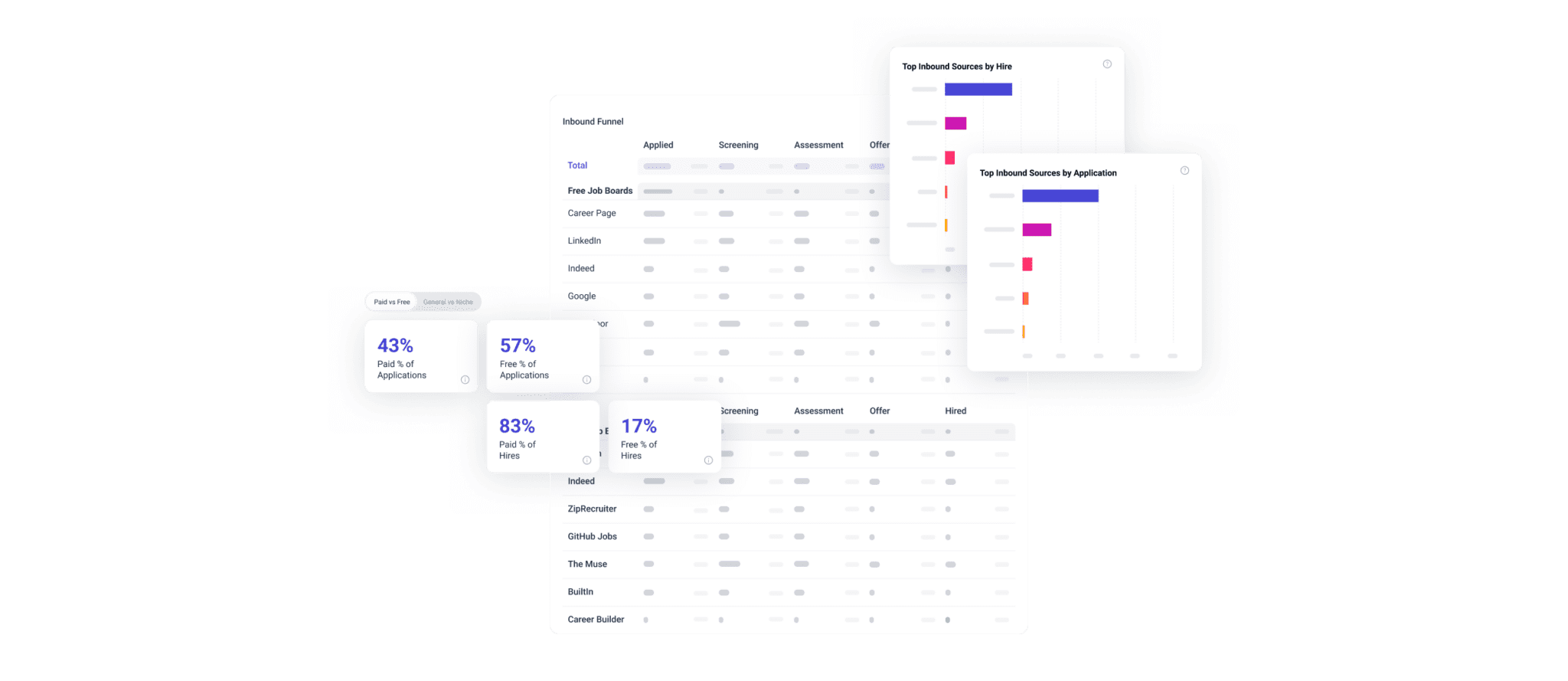Employee referrals are a great way to show respect to your team and gratitude to job seekers who want to work with you. And they do a great job of getting candidates into your pipeline and bodies into seats. In fact, most hiring teams use them as part of their overall recruiting process.
The catch is that relying on referrals (of the classic model) isn’t the most equitable or inclusive hiring tactic in the hiring playbook. While well-intentioned, their very nature makes them exclusive rather than inclusive. Blind referrals, on the other hand, can add a measure of fairness to the proceedings.
Blind employee referrals hide the fact that a candidate came through a referral program. Hiring managers and other members of the hiring team don’t know the candidate was a referral. Therefore, the referred candidate doesn’t get a leg up on anyone else, which keeps the hiring process more fair.
Why referrals are problematic
One of the issues with referrals is that they can turn some hires into an invitation-only or an invitation-preferred scenario.
An invitation-only scenario could be one where an employee refers someone before the job post goes live. That candidate may get an offer even before the public at large has a chance to apply. An invitation-preferred scenario could be one where an employee refers someone, and the hiring team leans toward that candidate without even realizing it. These candidates can sometimes get a bump up or receive an offer even when not as qualified as organic candidates.
Another issue with referrals is that they can interfere with your organization’s diversity, equity, and inclusion efforts. Employees tend to refer people like themselves, which can inadvertently perpetuate whatever cultural and racial makeup exists at the company. Referrals run the risk of creating a homogenous identity at your organization.
Here’s a bit of what the Society for Human Resource Management (SHRM) has to say on the subject:
While an employee referral program is a great recruiting tool, the program may create an unintentional disparate impact on some protected groups if employees refer candidates of the same race, religion, national origin, or any other protected class.
Therefore, relying heavily on employee referrals as a recruitment method may jeopardize workforce diversity efforts by unintentionally creating an imbalance in the diverse makeup of the workforce—an imbalance that could continue to multiply over time.
How blind employee referrals differ
Blind employee referrals run somewhat counter to common referral practices, but they make the process fair for all candidates. Here’s a few of the ways they’re unique:
- Referring employees don’t disclose their connection to a candidate to anyone on the hiring team. (Some applicant tracking systems offer an option to hide the source of a candidate from the hiring team.)
- Referring employees do tell the candidate about the blind referral process and ask that the candidate keep their relationship private.
- Employees on the hiring team recuse themselves from the hiring process when they know a candidate.
- If a candidate name-drops an employee during the hiring process, someone on the hiring team informs or reminds them of the blind employee referral policy.
- Hiring teams evaluate all applicants equally regardless of how they came into the candidate pipeline.
Again, from SHRM:
Evaluate all applicants, including employee referrals, using the same qualification criteria. If employee referrals immediately go to the top of the list, they may be receiving preferential treatment that undermines diversity.
Conduct ongoing analyses of the workforce and the applicant pool to ensure the program remains effective and yields intended results. Analyze the diversity categories as well as the quality of hire, resulting tenure from referrals and other factors. If the employee referral program is not having an impact and is negatively affecting the diversity of the workforce, then the program may need to be reevaluated.
A last note: When it comes to incentive programs for employees, blind referrals don’t change the dynamic. You can pay employees (or others) for referrals whether the referral is blind or public.
Use blind employee referrals for fairness
Employees mean well when they make a referral for an open job. It’s an attempt to help someone out, and it’s also a good sign that they would recommend the company to an acquaintance or friend. Organizations also mean well when they include those referrals in their candidate pipelines. They’re showing respect to current employees.
Referral programs are a great tool for your hiring teams. By all means, encourage employees to refer potential candidates. But consider using blind employee referrals to make sure your hiring teams avoid inadvertent favoritism and keep your hiring process fair.







